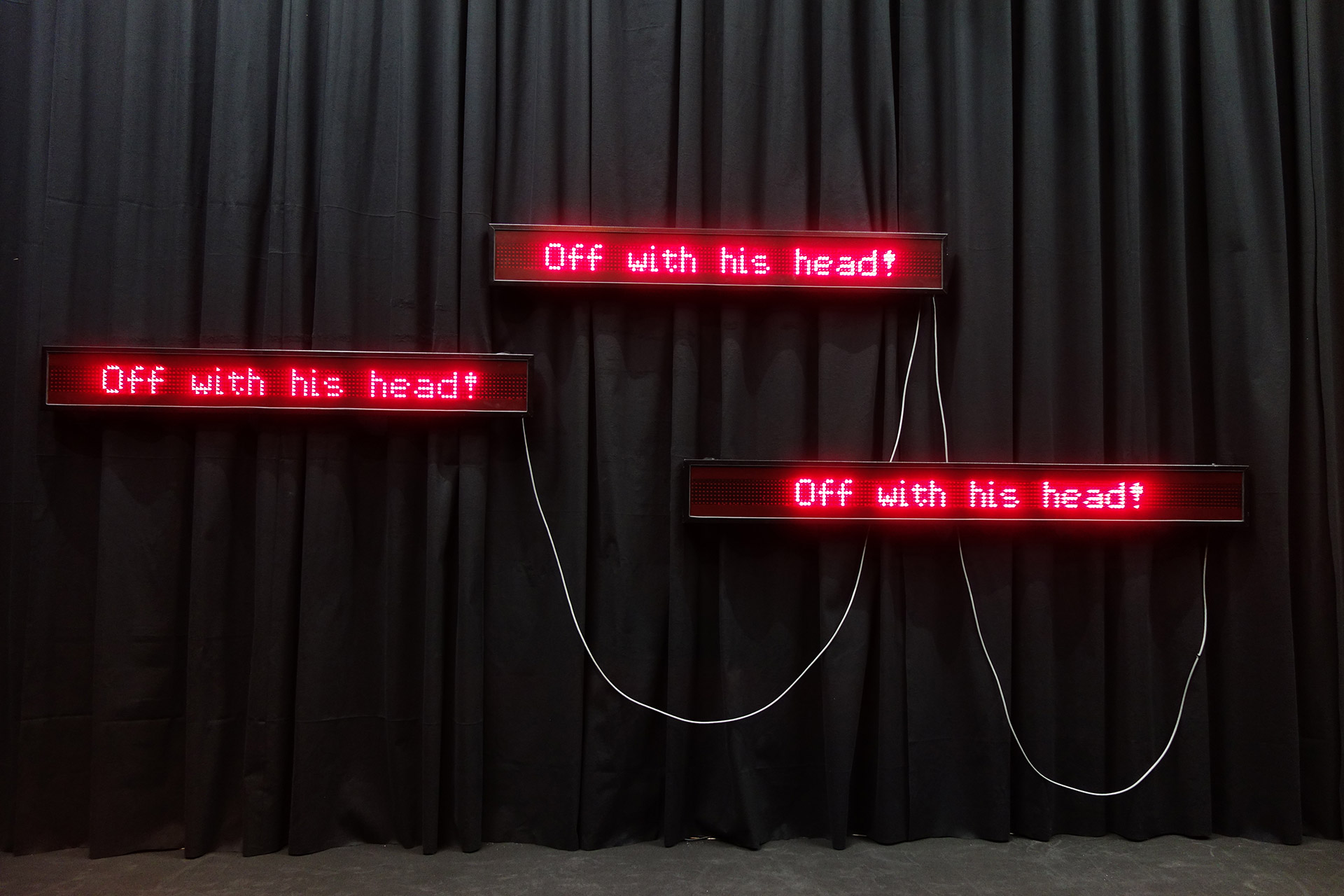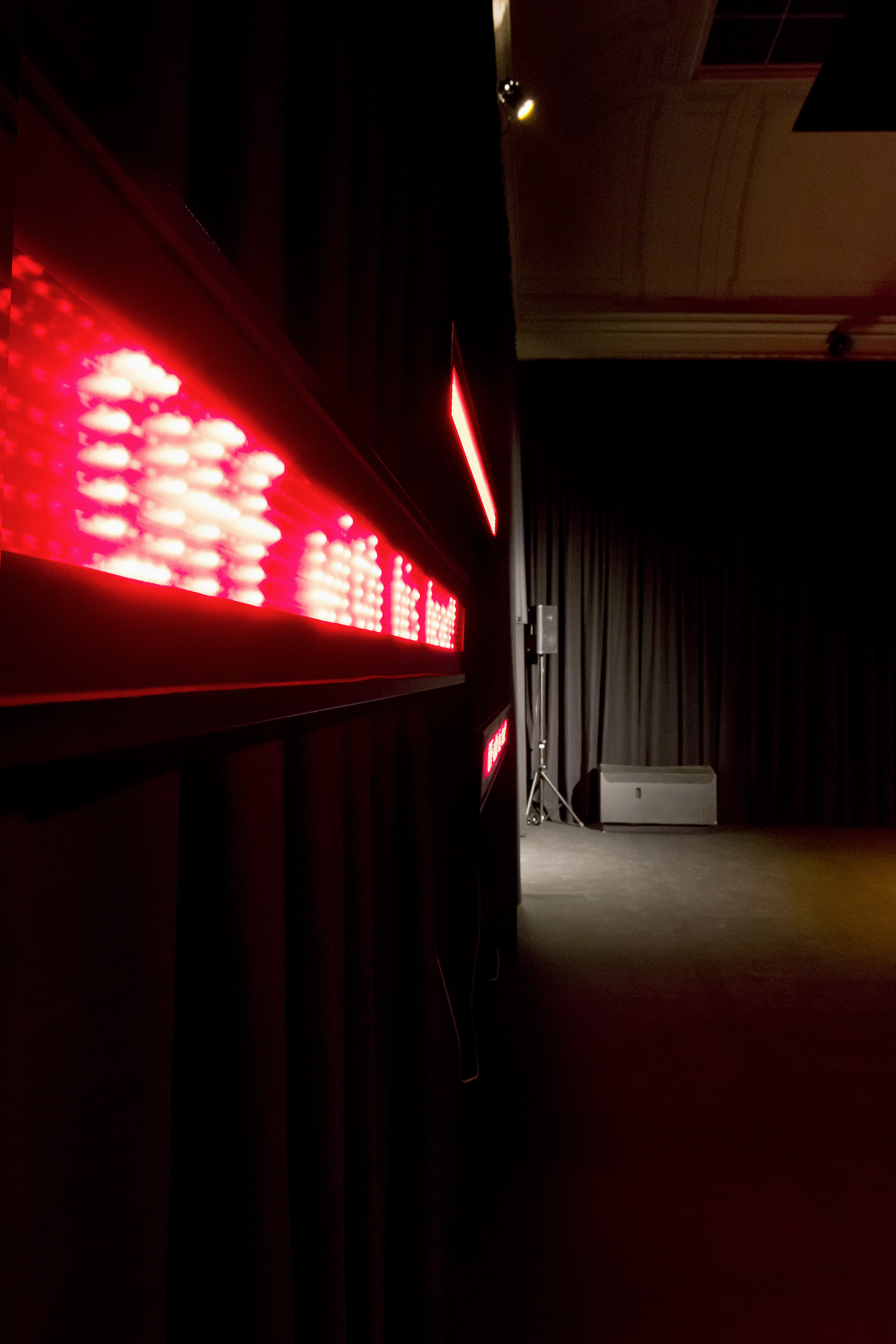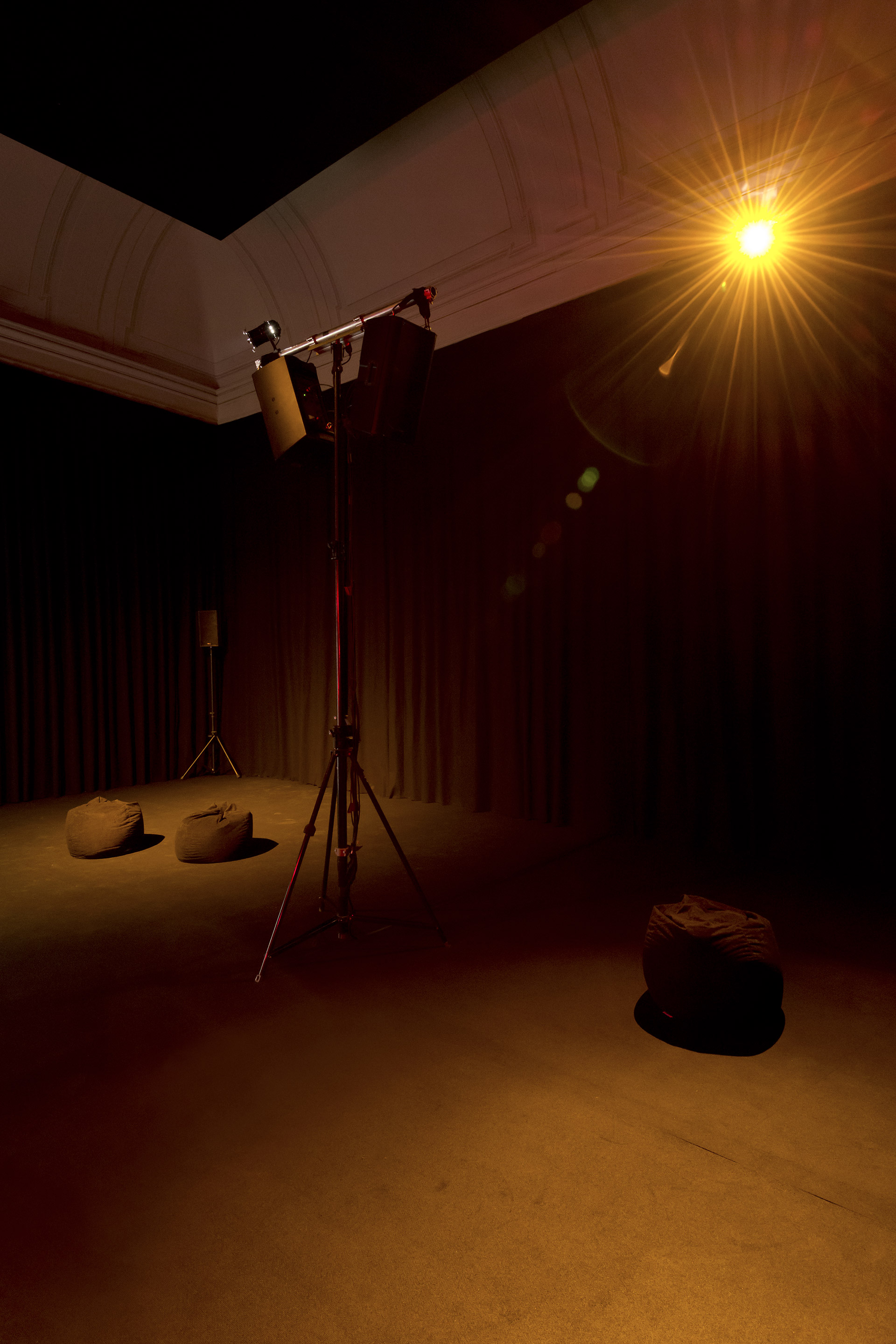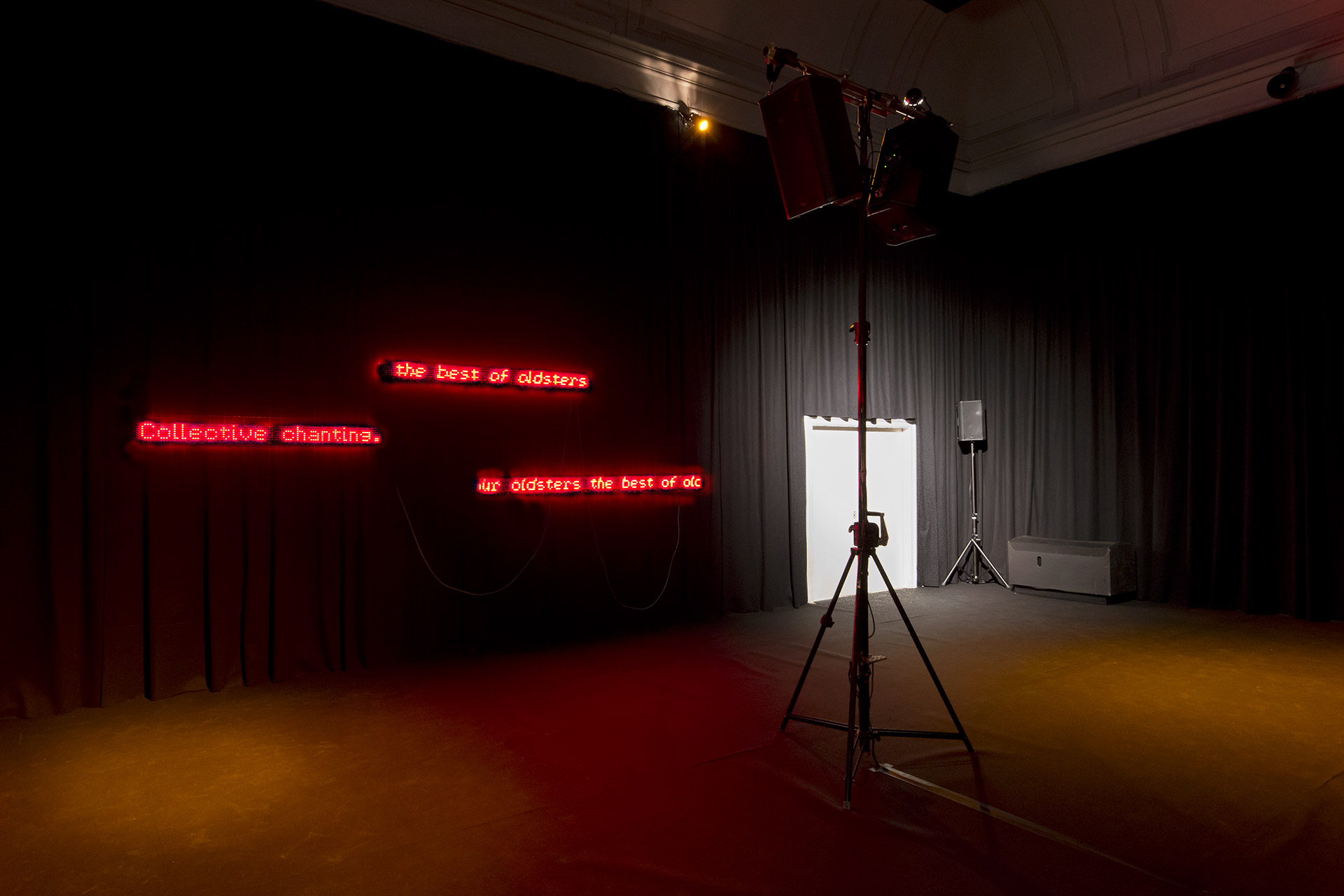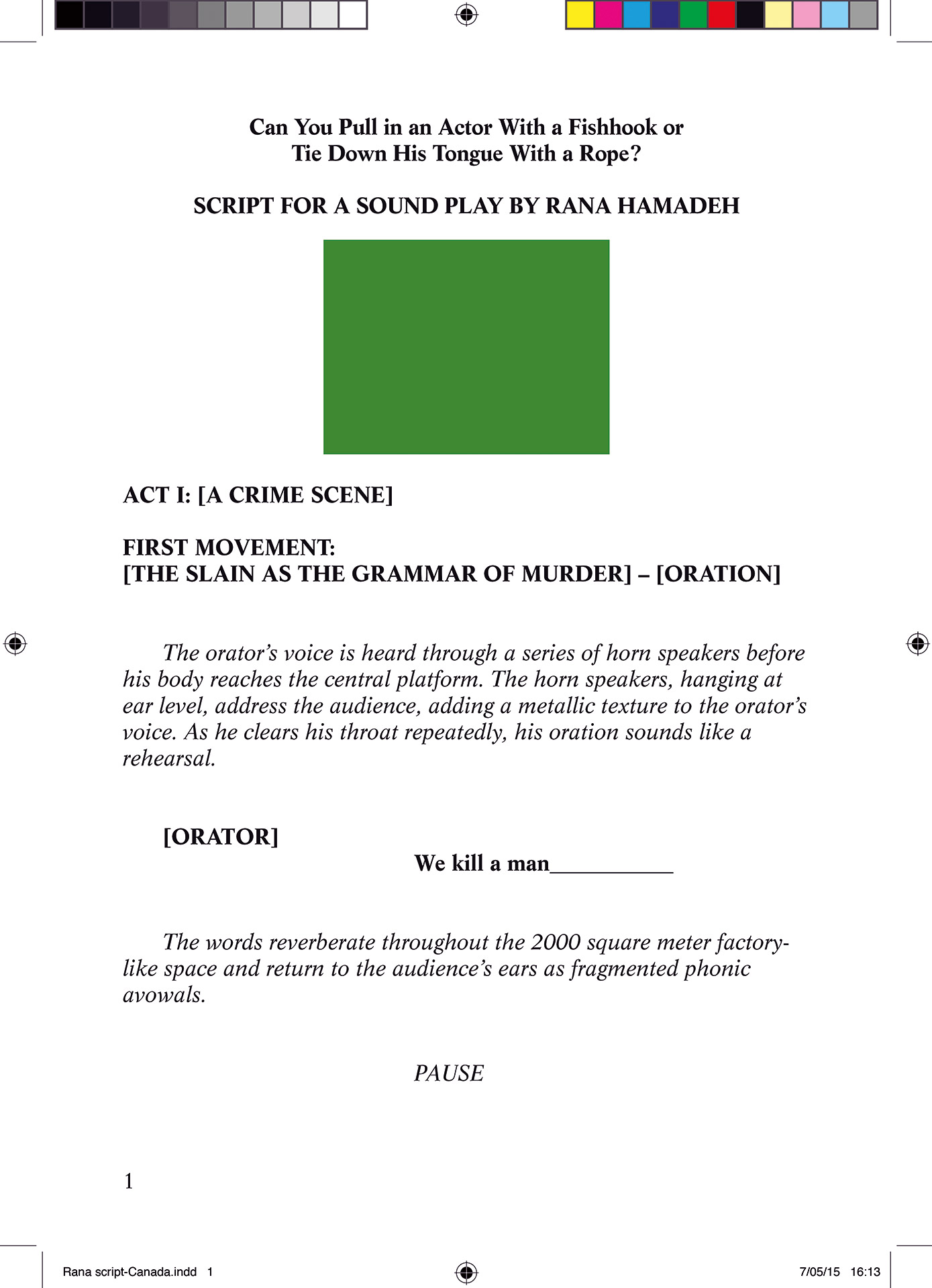Rana Hamadeh
Can You Pull in an Actor With a Fishhook or Tie Down His Tongue With a Rope?
January 13 – February 24 2019
This work comprises an 8-channel immersive and cacophonous sound installation accompanied by a discordant, continuously running script on three synchronised LED displays. This play without actors departs from a claim that I have been discussing in several of my recent works, viewing justice as the degree to which one can access the dramatic means of representation; the measure to which one can access theatre. Inherited from the genre of legal spectacle, this claim builds upon the lexicon that I have been developing throughout the past journey under The Alien Encounters project, constituting an aberrant understanding of notions of the testimonial, justice, legality, theatre, militarism, work and governmentality, and their relations.
Structured through the oratorical tradition of the Shiite ceremony of Ashura, this works takes this ceremony’s political, military and legal expressions within the Lebanese/Syrian context as its field for commentary and research. An annual ritual during which mourners re-witness, through the work of narration and oration, the unjust slaying of al Imam al Hussein (626–80 AD) – the grandson of Prophet Mohammad and an allegorical reference to the ultimate figure of the oppressed – the Ashuraic oratorical tradition is addressed throughout the work as an infrastructural dramaturgical framework that allows for setting up new modalities for understanding state-sponsored forms of violence and their enabling legal apparatuses. Attuning to the configurations of power that constitute the Syrian-Lebanese political weave, the orations of Cicero, the genesis of the al Ba’ath party and that of the military rise of Hizbollah, the assassination of my own grandfather – Hussein Mroué – and his burial in the shrine of Sayyeda Zainab in Damascus, among other references, this sound play re-dramatizes the logics under which the militant theatre of Ashura has been transformed in the recent decades into a militarised form of theatre. It further proposes a possible language of exit; a discourse of release.
The sound-play decodes then recodes, orders and choreographs the theatrical affects, technics and mechanisms that constitute the ceremony of Ashoura, opening up with that contemporary questions regarding what it means to constitute oneself as a testimonial subject in the place of the legal subject. It tests out what it means to script justice; to rehearse , orate, narrate, prop , weep, chant, choreograph, scenograph and ‘spectate at’ justice.
Technically, the entire composition is exclusively constructed from the voice of a solo vocalist, Carolina Daish, who was asked to orate the written script. The written script, decoding the oratorical affects of the ta’zieh, is overwritten by Daish’s voice, which, in turn is completely re-ordered following the strict internal logics of those same affects.
Rana Hamadeh
